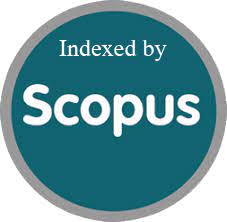Volumetric Assessment of the Medulla Oblongata According to Sex Using 1.5T Magnetic Resonances Imaging.
DOI:
https://doi.org/10.63682/jns.v14i15S.3667Keywords:
MOV: Medulla Oblongata Volume, MOL: Medulla Oblongata Length, MOH: Medulla Oblongata Height, MOW: Medulla Oblongata Width, MRI: Magnetic Resonance Imaging, MP-RAGE: Magnetization Prepared Rapid Gradient EchoAbstract
Background: The medulla oblongata, a critical brainstem structure, governs essential autonomic functions such as respiration, heart rate, and blood pressure. Understanding its anatomical and volumetric characteristics is vital for diagnosing neurological and neurodegenerative disorders, forensic investigations, and neurosurgical planning. Despite advancements in neuroimaging, normative data—especially population-specific information related to age and gender—remain limited, particularly in the western region of Gujarat. This study aims to establish normative volumetric data for the medulla oblongata using 1.5 Tesla MRI in the Western Gujarat population.
Method: This retrospective observational study was conducted on 50 subjects (26 males and 24 females) aged 20 to 66 years who underwent MRI brain scans at a tertiary care hospital from March 2023 to February 2024. Only scans with normal brain findings were included. MRI images were analyzed using Radiant DICOM Viewer 2023, and volumetric parameters such as length (MOL), width (MOW), height (MOH), and volume (MOV) of the medulla oblongata were measured.
Results: The study found significant differences in MOH and MOV between males and females (p < 0.001). Males had a higher average MOV (2274 mm³) than females (1752 mm³). Age-wise comparisons showed significant differences in MOL and MOW across age groups (p <0.024 and p < 0.020, respectively). Post-hoc analysis revealed that MOL significantly differed between the 20–29 and 30–39 age groups (p < 0.035), and MOW differed between the 50–59 and 60–69 groups (p < 0.036). Within-gender analysis found that MOV significantly varied among males across age groups (p < 0.022), while MOW varied among females (p < 0.048). Strong positive correlations were observed between MOV and individual medullary dimensions (p < 0.001).
Conclusion: This study establishes foundational normative data on the volumetric parameters of the medulla oblongata for the Western Gujarat population. Significant gender and age-related differences were observed, emphasizing the importance of demographic specificity in clinical assessments. These findings have potential applications in forensic science for gender identification, neurosurgical planning, and early detection of neurodegenerative diseases.
Downloads
Metrics
Downloads
Published
How to Cite
Issue
Section
License

This work is licensed under a Creative Commons Attribution 4.0 International License.
You are free to:
- Share — copy and redistribute the material in any medium or format
- Adapt — remix, transform, and build upon the material for any purpose, even commercially.
Terms:
- Attribution — You must give appropriate credit, provide a link to the license, and indicate if changes were made. You may do so in any reasonable manner, but not in any way that suggests the licensor endorses you or your use.
- No additional restrictions — You may not apply legal terms or technological measures that legally restrict others from doing anything the license permits.










